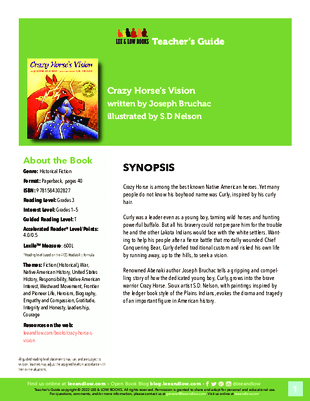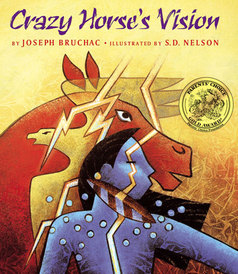TEACHER'S GUIDE FOR:
Crazy Horse's Vision
By Joseph Bruchac
Illustrations by S. D. Nelson
Click on the image below to view the Teacher's Guide.


About This Title
Guided Reading:
TLexile:
600LInterest Level:
Grades 1 - 5Reading Level:
Grades 3 - 3Themes
Nonfiction, War, United States History, Responsibility, Native American Interest, Heroism, Biography/Memoir, Earth/Sun/Moon System, Empathy/Compassion, Gratitude, Integrity/Honesty , Leadership, Courage
Collections
Fluent Dual Language , Fluent English, Biography and Memoir Grades 3-6, Native American English Collection, Native American English Collection Grades 3-6, Nonfiction Grades 3-6, Native American Heritage Collection, High-Low Books for Preteens (Grades 4-6), Joseph Bruchac Collection, Appendix B Diverse Collection Grades K-2, Listening Library, Listening Library, Responsibility/Leadership, Teachers' Choices Collection, Persistence and Determination Collection, Courage and Bravery Collection, Pedro Noguera Diverse Collection Grades 3-5, Pedro Noguera Reluctant Readers Collection , Native American Collection English 6PK, English Guided Reading Level T, Native American and Indigenous Booklist , Immigrant Connection Family Resource Night Collection
Want to know more about us or have specific questions regarding our Teacher's Guides?
Please write us!general@leeandlow.com Terms of Use














